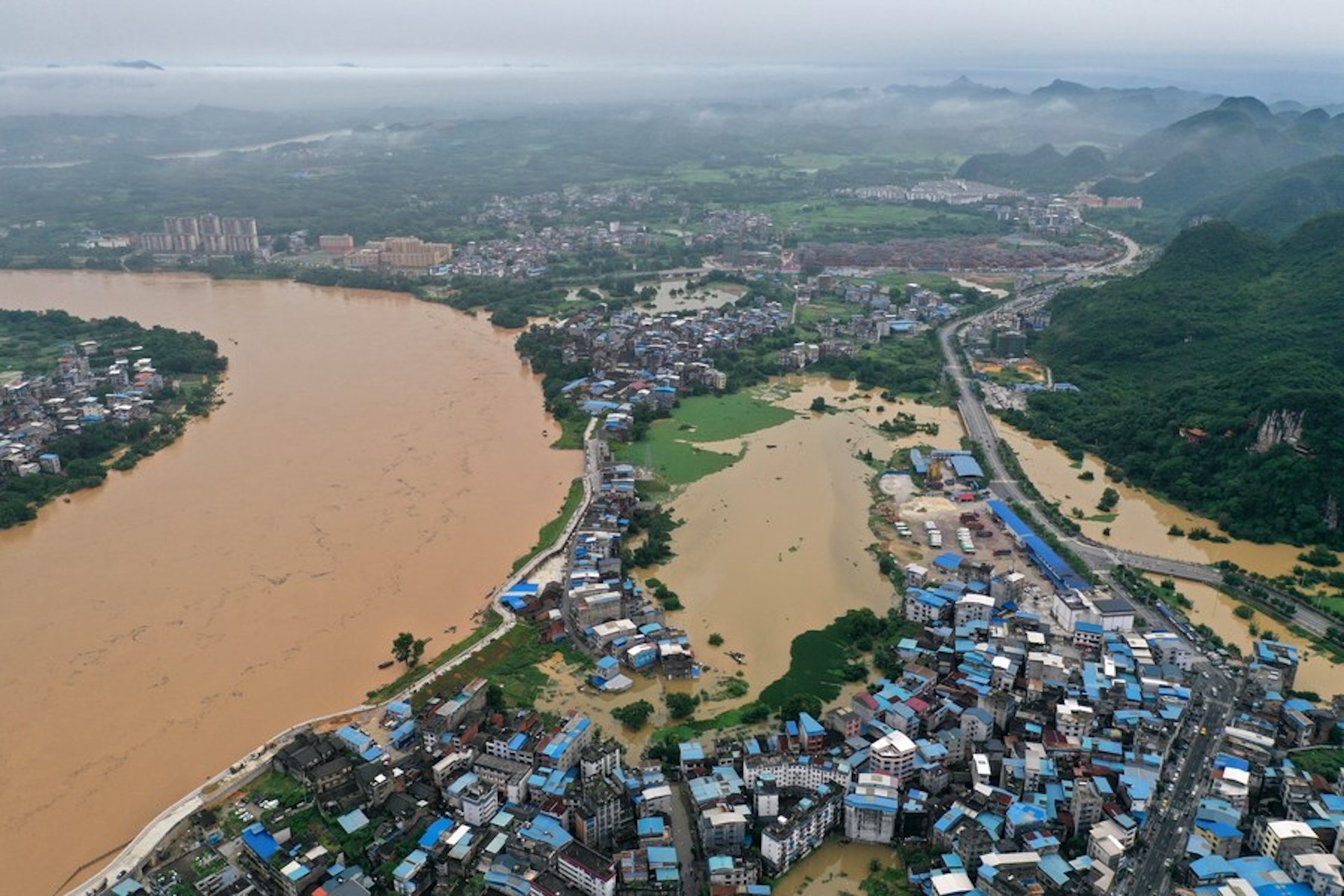China rolls out another plan to adapt to climate change
China’s Ministry of Ecology and Environment, and various other departments, yesterday published a new plan to tackle climate change amid another season of heavy rainfall that has already left at least 32 people dead in southern China.

China unveiled yesterday plans to better prepare and adapt to climate change, according to a new policy document that emphasizes climate change monitoring, early warning, and risk management.
The National Climate Change Adaptation Strategy 2035, jointly released by the Ministry of Ecology and Environment and 16 other departments, outlines plans to build a nationwide climate impact and risk assessment system by 2035 and to modernize climate-related disaster prevention systems.
- The document emphasizes two major countermeasures to climate change: resilience, the adaptation to climate change by taking advantage of favorable factors and preventing unfavorable ones, and mitigation, the efforts to reduce or prevent greenhouse gas emissions through new technologies and renewable energy.
- Major projects will be required to include the climate in environmental impact assessments.
- Monitoring at rivers and lakes will be strengthened to improve flood control and water security, with plans to reduce water intensity — the amount used per unit of economic growth — by 16% from 2021 to 2025.
China first issued a national climate change adaptation strategy in 2013, the year Beijing announced a “war on pollution” and began to prioritize carbon neutrality as one of its key aims. Since then, the world’s biggest carbon emitter has promised to bring greenhouse gasses to a peak by or before 2030 and to become carbon neutral by 2060.
- China’s harmful air pollutants fell 40% from 2013 to 2020, per the University of Chicago’s Energy Policy Institute, nearly as much in seven years as the U.S. did in three decades.
- Life expectancy has already improved by about an average of two years since 2013. If the downward trend in air pollution is sustained, people in China could live an average of 2.6 years longer.
In recent years, Beijing has faced greater pressure to take on climate change from abroad and at home: A Sixth Tone analysis of a Chinese news database that displayed how often keywords appeared in media articles showed that in 2019, fewer than 800,000 articles on the subject were published in Chinese media. This figure nearly doubled to 1.5 million in 2020 and over 3.2 million in 2021.
- Last summer, record-breaking rainfall in Zhengzhou, the capital of Henan Province, caused devastating floods that took the lives of over 300 people, destroyed 52,800 houses, and wiped out nearly 100,000 hectares of cropland. The direct economic loss from this disaster alone was around 53.2 billion yuan ($8 billion).
- Reports that Zhengzhou officials ignored early warnings issued by the city’s meteorological bureau, were slow to carry out emergency responses, and repeatedly underreported the number of deaths drew further outcry over the mismanagement of the government’s climate disaster response.
- In March, the United Nations’ Intergovernmental Panel on Climate Change (IPCC) published a report warning that China will be one of the countries hit hardest by climate change and will need to do more to adapt to mounting environmental hazards.
- Just this month, heavy rains (which can then trigger landslides, floods, and more) in southern China have killed at least 32 people, impacted millions of residents, and caused billions of yuan in economic losses: Over 1.44 million residents in the southern region of Guangxi have been affected by torrential rains and rain-induced disasters since early June.
China’s carbon-neutral drive is also a bet that investing in early action will reduce economic costs in the future: The long-term adverse effects and extreme weather events brought about by climate change will pose an increasingly serious threat to China’s economic development, said Xú Huáqīng 徐华清, the head of the National Center for Climate Change Strategy and International Cooperation.
- Without more efficient water allocation and use, the GDPs of China, India, and Central Asia would be between 7% to 12% lower by 2050, per a report in 2019 by the Global Center on Adaptation.
- The World Resources Institute estimates that every one yuan invested can generate two to 20 yuan in returns over three decades. But without greater efforts to mitigate the impact of global warming, the yuan could lose 53% of its real value over the next 50 years due to China’s rapid industrialization over the past two decades and “lenient environmental policies,” Barclays reported per Reuters.
With any new move, China’s climate commitments will continue to be put under the microscope as Beijing tries to balance propping up its struggling economic growth with reducing its dependence on its coal-heavy energy system.






